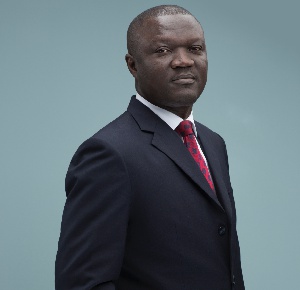 MD-CEO of FBNBank Ghana, Victor Yaw Asante
MD-CEO of FBNBank Ghana, Victor Yaw Asante
Financial inclusion across developing countries, especially those in sub-Saharan Africa including Ghana remain low even though much progress has been made in the last decade.
According to the Global Financial Inclusion Data of the World Bank, the proportion of adult population in Ghana with financial account increased from 41 percent in 2014 to 58 percent in 2017.
The data also showed that the adult population with accounts with financial institutions increased from 35 percent to 42 percent between within the same period.
This implies that not all the accounts of the adult population are on the platforms of financial institutions as the disparity largely explains the role of mobile money and the telecommunication companies in the financial inclusion process.
This notwithstanding, Ghana’s performance is low compared to some other African countries like South Africa, Botswana, Mauritius and Kenya. For instance, in Kenya 82 percent of the adult population have accounts while 56 percent of the adult population had accounts that are with financial institutions as at 2017.
According to Mr. Victor Yaw Asante, the Managing Director of FBNBank Ghana Limited, the rate of financial inclusion depends on a number of factors both from the side of the banks and the customers and as banks find ways to bridge the gap, the situation in Ghana will improve.
He mentioned that: “factors such as customer due diligence requirements, eligibility requirements, documentation, information asymmetry, inadequate ICT infrastructure, affordability and trust affect the extension of the financial services and products to the underserved groups and also their willingness and ability to patronize them.”
Although these factors are multi-faceted, he believes that the current situation can change significantly “if banks intensify efforts in product development and service delivery which are tailor-made to satisfy the needs of individual customers, businesses or groups within the underserved population.”
According to him, once banks understand clients, the environment, the regulations, and the institutional capabilities, it is time to step up product and services design taking into account all these variables especially the clients.
He added that “the digital age is linked with tailor-made offerings that deliver personalised services, products and pricing to clients and leveraging technology and big data should help banks to reach the unbanked segment of the population especially through the trust built by customers being served.”
Mr. Asante explained that personalization in banking is to provide a valuable service or product to clients based on their personal experiences and historical data. This helps to directly satisfy the customer’s needs and help to build trust which has large implications for the financial inclusion process in Ghana given our past. By building trust, “happy customers can assist in educating family and friends about the importance of being an account holder and using certain financial products and services,” Mr. Asante added.
To this end he envisaged that customer satisfaction and experience objectives and the need for banks to differentiate themselves from competition will drive personalization through which financial inclusion will be impacted.
High financial inclusion is very high on government’s agenda as it works towards a cash–lite economy leveraging on technology.
Last year, government launched three policy initiatives aimed at deepening financial inclusion and increase the shift to digital payments. They were the Digital Financial Services Policy, the Cash-Lite Roadmap and the National Financial Inclusion and Development Strategy.
Specifically, the aim of the National Financial Inclusion and Development Strategy is “increasing financial inclusion from the current 58 percent to 85 percent by 2023 thus helping to create economic opportunities and reducing poverty.”
Mr. Asante is hopeful that banks and other financial institutions in the country will contribute immensely to achieving this goal.